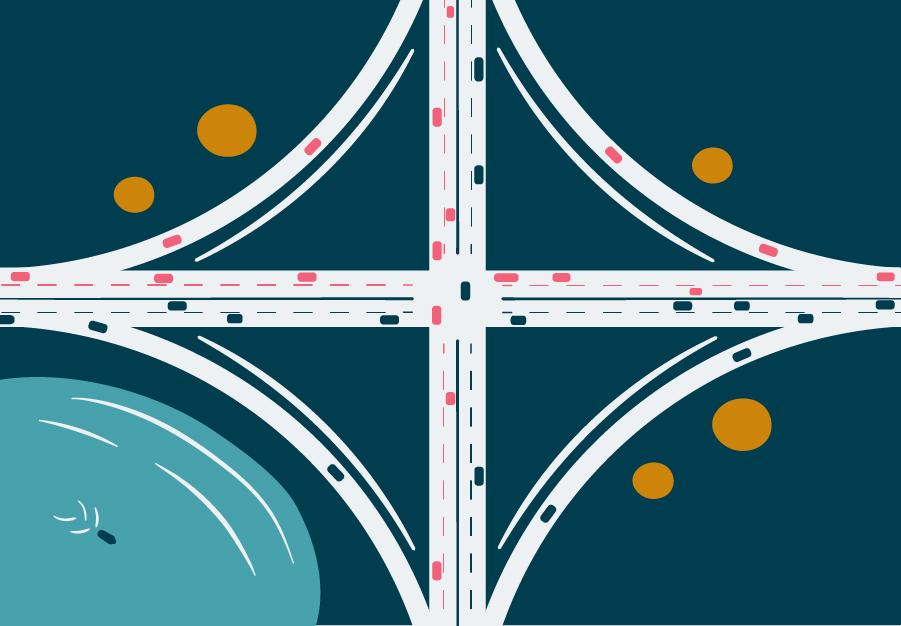As the number of digital touchpoints that customers experience in their mobility journeys has increased, the lines between each one have slowly started to blur. Today, organizations are shifting away from delivering distinct individual services and moving toward an ecosystem model, where customers can engage with diverse services as part of a single, unbroken experience.
These ecosystems bring together multiple aspects of mobility, including long-term ownership and short-term usage of vehicles, in-car features and functionality, charging and refueling, and vehicle maintenance and after-sales — ideally rolled together to create complete, consistent, and convenient customer journeys.
The key to empowering consumers within these ecosystems is the concept of a single customer identity that allows free movement between services without creating new accounts or having to use multiple apps or interfaces. From the perspective of the service providers in this ecosystem, this is a shared identity that can pass on or connect a user’s credentials between different parts of their experience.

Support evolving ownership models
When a driver sits down in a purchased, shared, or leased vehicle, it recognizes them and adapts to their preferences immediately — whether it’s their first drive or their thousandth.

Extend customer engagement opportunities beyond the vehicle
Whether a customer is charging, refueling, buying insurance, or choosing their next vehicle, a single identity ensures every engagement is consistent and trustworthy.

Increase long-term loyalty with lifetime customer relationships
Data is linked to customers, not vehicles or purchases, so their journey doesn’t end when they leave a vehicle.

Use a holistic data profile to support continuous improvements to experiences
Every journey, every touchpoint, and every engagement generates data that can be used to continuously improve the driver experience.


But before an organization can meet these expectations, there are a lot of important questions to answer. Let’s explore four key considerations that automotive operators, manufacturers and service providers must keep in mind to deliver the most seamless and memorable customer experiences.
Will your organization own the future customer journey?
Modern service ecosystems often incorporate offerings from multiple complementary organizations — from the manufacturers building the cars to the energy and insurance providers that keep them on the road.
With so many parties involved, the big question organizations need to address is who orchestrates the customer journey as a whole? This topic can be broken down into smaller questions:
- Who designs and sets the tone for the customer experience in the ecosystem?
- Who is responsible for maintaining and managing a single customer identity across their journey?
- Who will gather data from that customer journey and who will manage that data to create insights that can improve and enhance the experience?
- Who is responsible for ensuring tight integration between each service and across organizations and for building essential technical elements like apps, dashboards, APIs and more?


The trade-offs between openness and control

Freedom of design and content creation
Or
Control over quality and consistency

Ease of access
for third-parties
Or
Safeguarding sensitive customer data

Centralized ownership of customer journeys
Or
Service providers empowered to create unique experiences

Breadth and diversity of services
Or
Maintaining a focused and relevant ecosystem
Are you ready to become a custodian of customer data?
For automotive organizations, embracing a single customer identity means managing more — and more sensitive — customer data than ever before.
As with all digital projects, security can’t be an afterthought. It must be built into decisions right from the design stage. To do that, organizations must answer tough questions about their capabilities and approach, including:
- What value are we adding to our customers by obtaining, processing, and leveraging their data? How will the experience change when using the vehicle for work compared to a family trip?
- How do we balance openness and flexibility within the ecosystem against our security demands? How can our ecosystem partners harness data securely, without fully exposing it to one another?
- How do we communicate the transparency of data use to the customer and build trust that the data is being used in compliance with their personal preferences?
- How do we provide privacy assurance to the customer and ensure the privacy of people who aren’t the vehicle’s owner?
- Where will data be physically stored, and how can we enable our customers to travel across borders without incurring new data sovereignty challenges?
- How can we ensure we adhere to GDPR, particularly in new terrains such as Artificial Intelligence?


More data. More responsibility.
How will your organization need to evolve alongside your ecosystem?
Creating and managing an ecosystem of connected services is a very different challenge to providing standalone digital experiences or high-quality customer products. To deliver an outstanding customer experience across a whole ecosystem demands significant shifts in organizational thinking, strategy and even structure.


Before building an ecosystem that uses single customer identities, companies need to carefully ask:
- How should services within the ecosystem be monetized while offering a compelling customer value proposition, and how will our current monetization models need to change?
- How will we transform our operating model and culture to drive continuous improvement and rapid innovation within the ecosystem?
- How can we respond quickly to emerging technologies and shifting customer demands?
- How will we acquire or develop the digital skills and talent needed to create robust products and services, and move towards becoming more of a software company delivering exceptional digital customer experiences?
- How could our ecosystem approach support overall organizational strategy, and will it affect future strategic direction?


Embrace Service Design principles
How can you ensure a consistently high-quality experience across an open ecosystem?
Automotive organizations are used to having total control over the experiences that customers have with their vehicles. As a result, they were able to uphold a high quality that they've built their reputation on. Naturally, they will want future service ecosystems to deliver experiences that also reflect their brand and maintain these standards.
Being able to offer a diverse and attractive menu of third-party services is a key part of the experience economy. However, this means relinquishing absolute control over the final customer experience, with each service provider responsible for the design and quality of their part of the ecosystem. With this in mind, before they start building anything, organizations should ask:
- How will we deliver unified experiences as customers move between services that are owned by different parties within the ecosystem?
- How will each service provider use single customer identities? What changes might they make to the customer’s profile, and how might this impact on the wider ecosystem?
- Do we want to provide customers with familiar services and touchpoints, or is it more important that we deliver bespoke, unique experiences
- When building the infrastructure of the ecosystem, where could we use existing tools and which technologies are worth designing from scratch? How will third-party APIs be implemented to connect services together?

Measure your customer experience
Encourage product teams to establish and deliver on clear customer-centric goals that measure the quality of the user experience

Involve customers in the product lifecycle
Ensure that customer feedback is built into the teams’ delivery strategy, and that customers are used to validating product and service ideas

Look at the whole journey
Apply Service Design principles to map, understand and analyze the journeys that customers are on, to develop a picture of the whole end-to-end experience

Create a compelling set of customer stories
Visualize the customer journey as a series of stories and micro-experiences that can be shared, evaluated, and revisited by the team and the customers themselves


It’s a new journey — for customers and companies alike
Adapting to the evolving mobility behaviors and service demands of customers requires a shift in focus from automotive organizations and their partners. Higher expectations for customer experience and convenience across a seamless ecosystem make it critical to balance openness and flexibility with consistency, quality, and trust.
Becoming the custodian of a single customer identity offers a powerful connection to — and continued engagement from — the core audience, but comes with security, ethical and legal obligations that require new capabilities. Delivering an interconnected web of services and products across multiple touchpoints demands a dynamic and discovery-driven team mindset, able to challenge assumptions and balance business strategy with fluid customer insights.
Get it right, and these challenges present an opportunity for organizations to create engaging, differentiated mobility experiences that drive loyalty and transform what it means to be a driver or passenger.
As pioneers of product thinking, platform design, and agile methodologies, we understand what it takes to bring game-changing digital ecosystems to life. For almost 30 years, Thoughtworks has helped organizations navigate digital challenges and transform their business to continuously build, deploy and manage exceptional products and services. As experts in customer experience design, platform development, data mesh, infrastructure-as-code, and artificial intelligence, we are perfectly positioned to help you answer all these questions and best position your company for the future.















